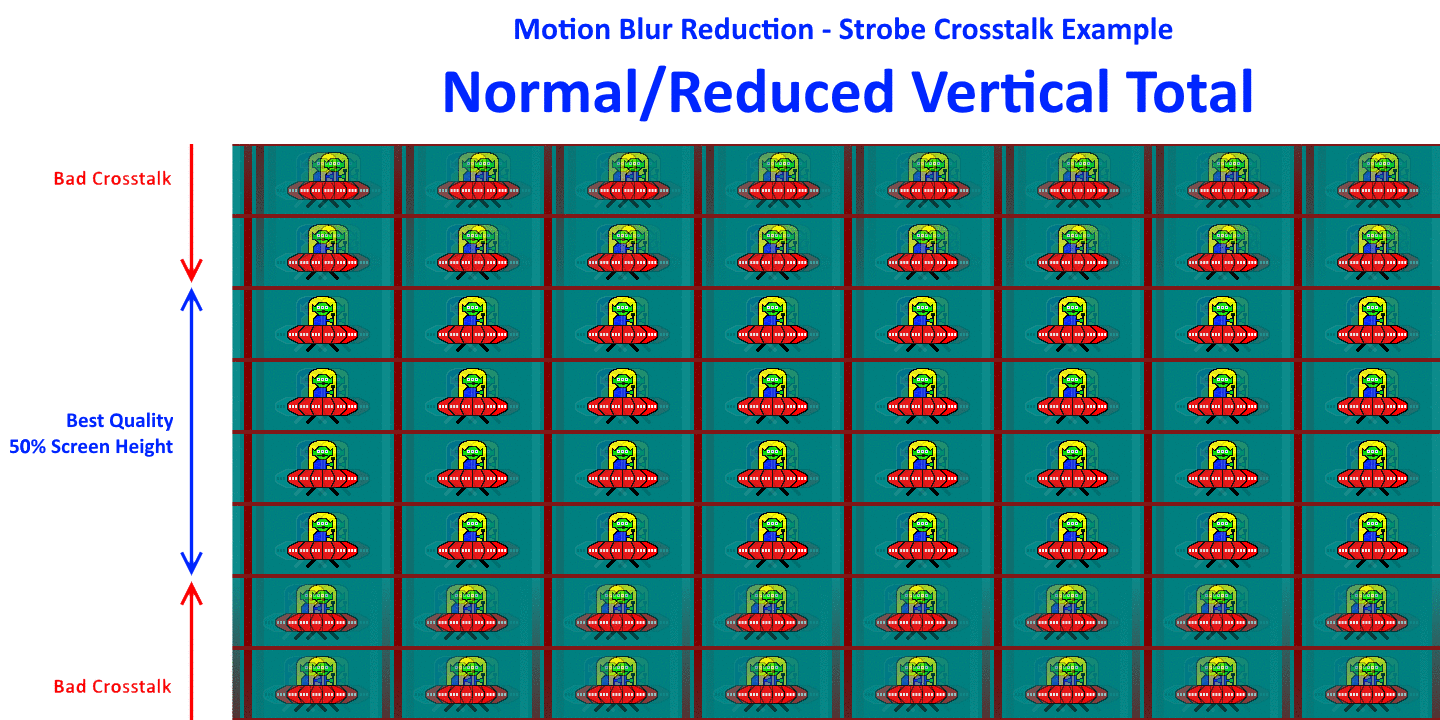Depends...
Indeed, Large Blanking Intervals (Large VTs) is indeed the fundamental principle of Quick Frame Transport (QFT).
(Incidentially, a variable refresh rate signal running at a low frame rate on a high-Hz monitor, is effectively a large blanking interval too -- given the variable-sized blanking interval nature of variable refresh rate signals)
For non-strobe lag, large VTs can behave as a defacto
Quick Frame Transport (QFT) when used in conjunction with RTSS Scanline Sync to re-time frame presentation to beginning of visible refresh (end of BVI) rather than end of visible refresh (start of VBI)
However, some strobed monitors already has internal scan conversion for their strobed modes at lower Hz, e.g. partially pre-buffering a slow-scanning signal (e.g. 144Hz signal) for an accelerated scanout (faster than 1/144sec) -- to automatically internally create large blanking intervals without user intervention.
The buffering behaviour adds lag and can be bypassed via large vertical totals to pre-empt the prebuffering behaviour (e.g. deliver a 144Hz refresh cycle in 1/240sec via the use of a ToastyX Large Vertical Total trick).
Your frame transport acceleration factor will be (New Vertical Total) / (Original Vertical Total), so a VT1500 replacing VT1125 gives you a frame transport acceleration factor of 1.33x faster frame delivery. So, you really need a large vertical total raise to gain any input lag savings from a large VT.
This can trigger some monitors to skip its prebuffering step, with realtime sync between cable scanout and panel scanout (the art of sequential pixel delivery, one pixel row at a time, over the cable, and the LCD's electronics sequential refreshing behaviour), as seen in
High Speed Videos of LCD Scanout
Now, a different way to reduce strobe lag is simply adjusting strobe phase, since the asymmetry between panel scanout versus global flash, creates a latency gradient along the vertical axis of the screen's surface.
Adjusting strobe phase to right below your screen crosshairs will generate the lowest strobed lag for your crosshairs. The lag is lowest right above the "strobe crosstalk bar" and highest right below the "strobe crosstalk bar".

